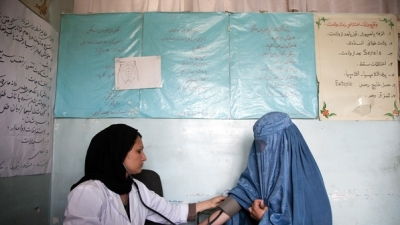Challenge
In 2003, Afghanistan was among the poorest countries in the world, emerging from decades of conflict and in the midst of post-conflict reconstruction and transition, with substantial international security and development support.
Afghanistan’s health situation was also among the poorest in the world, with a lack of health coverage, prenatal care, vaccine coverage, and health facilities. Most rural infrastructure was either destroyed or in dilapidated condition. Service coverage was very limited and uneven. Many years of internal strife had heavily disrupted the public network of services and most health services were largely provided by nongovernmental organizations (NGOs) financed under humanitarian programs. These NGOs were financed directly by (and reported to) the external donors and not the government, and as a consequence there were large deficiencies and inequalities in infrastructure, human resources, and availability of services. Many rural areas had no modern health services at all. Some NGO programs were uncoordinated, without a common policy framework or technical standards.
Approach
The health sector’s main partners for financial support are the European Union (EU), the U.S. Agency for International Development (USAID) and the World Bank. Under leadership of the World Bank, these partners agreed with the Ministry of Public Health to finance the delivery of a well-defined basic package of health services (BPHS) and essential hospital services (EPHS). Their combined support covered all provinces. In the large majority of provinces, service delivery was still by NGOs under a contracting mechanism, while the ministry focused on developing capacity for its stewardship functions. This contracting mechanism was a very innovative move for Afghanistan. The contracts between the ministry and the NGOs were performance-based and the NGOs were given freedom to reach their targets using creative solutions adapted to local situations while keeping efficiency and effectiveness in mind.
When annual increases in service coverage started leveling off, the Bank introduced a results-based financing (RBF) approach as a further innovation. The results of the pilots are so far very promising with an ever-increasing difference between the intervention and control groups.

